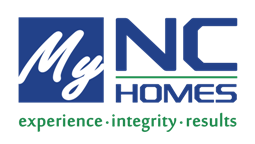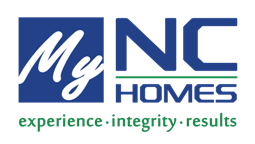Seller Paying Closing Costs in Durham, Chapel Hill and Cary NC
Posted by Larry Tollen on Monday, November 16th, 2015 at 6:15pm.
 One of the most common terms I see negotiated in contracts for a home in Durham today is for the seller to contribute money to the Buyer to cover all, or part of the Buyer’s Closing Costs. Seller paid closing costs can, with certain limits, be paid by the seller to the buyer without any problems…if you know the rules. Ignorance of the Underwriting Guidelines for the program and Bank that the Buyer is applying for a mortgage from, can turn a seller contribution of closing costs into a real problem!
One of the most common terms I see negotiated in contracts for a home in Durham today is for the seller to contribute money to the Buyer to cover all, or part of the Buyer’s Closing Costs. Seller paid closing costs can, with certain limits, be paid by the seller to the buyer without any problems…if you know the rules. Ignorance of the Underwriting Guidelines for the program and Bank that the Buyer is applying for a mortgage from, can turn a seller contribution of closing costs into a real problem!
It can be the difference between getting a loan – or getting denied! Yikes!
Seller contribution is really just another way of saying a part or all of the closing costs are paid by the seller. For example, a contract could read that the seller will “contribute” or pay up to 3% of the real estate closing costs on behalf of the buyer. If the buyer’s loan program caps for allowable seller contributions is exceeded, the overage is called a seller concession. As an Example, the Seller states they will contribute $5000 for closing costs. If the borrower is only getting a loan for $100,000, and the loan program caps the amount a seller can pay towards closing costs to 3% – that’s a problem.
Seller concessions as defined here serve to reduce the buyer’s loan amount dollar for dollar. So that extra $2,000 in our example above could potentially cause the buyer problems when it comes to cash needed to close
Again, say you want to buy a $100,000 home in Chapel Hill and you have 5% down payment and not a penny more. The standard FNMA guideline at 95% only allows for a 3% seller contribution toward costs. Let’s also assume you qualify for a $95,000 loan and not a penny more. The loan is structured as a $95,000 conventional loan that allows for 3% in seller contributions which the seller agrees to pay. The 3% equals $3,000 but you discover the total real estate closing costs are $3,500!
Where is the extra $500 going to come from? You don’t have it. You can’t raise the loan amount based on our example. It’s got to come from the seller, right? Nope. Remember? That’s going to be considered a concession, and it will reduce the loan amount, and still require you to pay the extra $500 in closing costs.
That’s where working with a Real Estate Professional, and a mortgage lender when structuring your contract become even more important. If you are doing this as a For Sale By Owner, and you don’t have a Real Estate Agent involved, you really haven’t done yourself any favors!
The same holds true for the FNMA Flex 100 loan program..these underwriting guidelines state that only 3% is an allowable seller contribution, and that comes with a borrower required $500 minimum cash investment. We will need to run the numbers to see if your loan amount and sales price will provide enough cash to close with the limited seller contribution and buyer required $500.
FHA Mortgage Underwriting Guidelines and VA Mortgage Loan Guidelines also have a seller contribution cap towards closing costs, but it’s a more generous amount at 6%. USDA Home Loan Guidelines are more lenient, and don’t really have a set cap… however most bank underwriters cap the amount a seller can contribute on a USDA Home Loan to 6%.
As a precaution, remember that it is better to have a contract written in a way that states “Seller agrees to pay buyer closing costs, prepaids up to but not exceeding ***the percentage the loan program you are applying for***” This will keep you within the underwriting guidelines and you won’t have to renegotiate your contract at the last minute… and if you write the contract to say, “Seller agrees to pay buyer closing costs, prepaids of ***$ Some Dollar Amount***” You could be in trouble!
Solving Seller Contribution To Closing Costs Limits
When we run into a situation where the Buyer has closing costs that are not covered by the Seller, and the Buyer doesn’t have the extra cash, there are a couple of ways to find a solution. If it’s only a couple of hundred dollars, the lender may take the position of waiving a fee to make the loan work. However, mortgage lending is a FOR PROFIT part of the bank, and if you are asking the bank to waive $1400, that’s probably not possible.
Loans are generally priced so that in this case, the Bank can offer you a rate of one percentage rate with a certain amount of closing costs, and a slightly higher interest rate with lower closing costs. This is generally the best solution in the situation where the Buyer does not have the additional cash to pay closing costs, and the Seller is capped at the amount they can pay.
This is one of the Terms you want to know more about as you sell your house too! Click or call My NCHomes / Larry Tollen and let me help! 919 659 5173
 My NC Homes is your #1 source for all of your real estate needs in Cary, Chapel Hill, and Durham areas. Get in touch with us online or by phone at 919-659-5173 today. We have over 25 years of experience by helping people in the Research Triangle reach their real estate goals.
My NC Homes is your #1 source for all of your real estate needs in Cary, Chapel Hill, and Durham areas. Get in touch with us online or by phone at 919-659-5173 today. We have over 25 years of experience by helping people in the Research Triangle reach their real estate goals.
